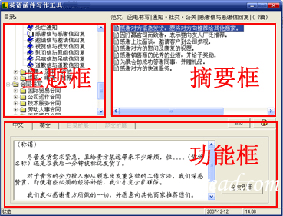英文法律词典 T-25
|
THREAT, evidence. Menace. 2. When a confession is obtained from a person accused of crime, in consequence of a threat, evidence of such confession cannot be received, because, being obtained by the torture of fear, it comes in so questionable a shape, that no credit ought to be given to it; 1 Leach, 263; this is the general principle, but what amounts to a threat is not so easily defined. It is proper to observe, however, that the threat must be made by a person having authority over the prisoner, or by another in the presence of such authorized person, and not dissented from by the latter. 8 C. & P. 733. Vide Confession, and the cases there cited. THROAT, med. jur. The anterior part of the neck. Dungl. plea. Diet. h. t.; Coop. Dict. h. t.; 2 Good's Study of Med. 302; 1 Chit. Med. Jur. 97, n. 2. The word throat, in an indictment which charged the defendant with murder, by "cutting the throat of the deceased," does not mean, and is not to be confined to that part of the neck which is scientifically called the throat, but signifies that which is commonly called the throat. 6 Carr. & Payne, 401; S. C. 25 Engl. Com. Law Rep. 458. TICK, contracts. Credit; as, if a servant usually buy for the master upon tick, and the servant buy something without the master's order, yet, if the master were trusted by the trader, he is liable. 1 Show. 95; 3 Keb. 625; 10 Mod. 111; 3 Esp. R. 214; 4 Esp. R. 174. TIDE. The ebb and flow of the sea. 2. Arms of the sea, bays, creeks, coves, or rivers, where the tide ebbs and flows, are public, and all persons may use the same for the purposes of navi-gation and for fishing, unless restrained by law. To give these rights at common law, the tide must ebb and flow: the flowing of the waters of a lake into a river, and their reflowing, being not the flux and reflux of the tides, but mere occasional and rare instances of a swell in the lake, and a setting up of the waters into the river, and the subsiding of such swells, is not to be considered an ebb and flow of the tide, so as to constitute a river technically navigable. 20 John. R. 98. See 17 John. R. 195; 2 Conn. R. 481. 3. In Pennsylvania, the common law principle, that the flux and reflux of the tide ascertain the character of the river, has been rejected. 2 Binn. R. 475. Vide Arm of the sea; Navigable river; Sea shore. |








